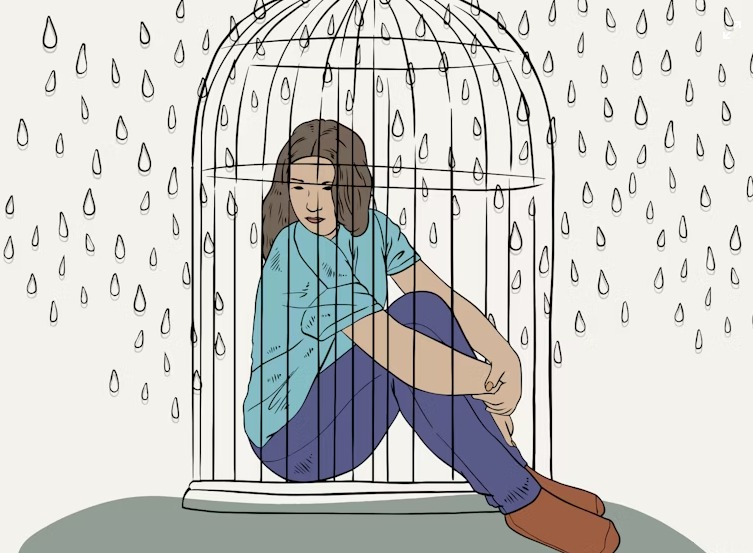The Invisible Burden: Understanding Mental Health for Nepali Women
Explore the unique stressors, cultural pressures, and pathways to support for mental health for women Nepal and break the silence on Nepali women stress.
MENTAL HEALTH IN NEPAL
MANOSANSAR
3/14/20253 min read


In the fabric of Nepali society, women are often the unwavering pillars of family and community. They are celebrated for their strength and resilience. Yet, beneath this strength, many carry a profound and often silent weight—an invisible burden of psychological distress that remains largely unacknowledged and untreated.
The conversation around mental health for women Nepal is not just a subset of the broader discourse; it is a critical, distinct issue shaped by deep-rooted cultural norms, gender roles, and societal expectations. The Nepali women stress experienced is multifaceted, making the exploration of gender and mental health essential for true understanding and healing.
The Anatomy of the Burden: Unique Stressors for Nepali Women
The invisible burden is not a personal failure but a systemic one, compounded by several key factors.
The Dual Shift: Many Nepali women navigate the 'double burden', managing full-time employment or demanding agricultural labor outside the home, while remaining solely responsible for all domestic chores and child-rearing within it. This relentless cycle offers little time for rest or self-care, leading to chronic exhaustion and stress.
Patriarchal Norms and Limited Agency: In a traditionally patriarchal structure, women often have less decision-making power over their own lives, from financial choices to personal freedoms. This lack of autonomy can lead to feelings of powerlessness, low self-worth, and a stifled sense of self.
The Dowry System and Domestic Pressures: Despite being illegal, the practice of dowry and related domestic violence remain grim realities for some. The fear of bringing "shame" to their natal family can trap women in abusive situations, creating immense psychological trauma and anxiety.
Intergenerational Trauma and Somatic Symptoms: Due to stigma, Nepali women stress often doesn't manifest as verbal complaints of sadness. Instead, it is frequently expressed through physical, or somatic symptoms like chronic headaches, body pain, fatigue, and digestive issues, which are more culturally acceptable to discuss.
Barriers to Seeking Help
Acknowledging this burden is the first step; the next is understanding why so few women seek help.
The Stigma of Being Weak: The immense value placed on female resilience means admitting to struggling with mental health can be misconstrued as weakness or failure in their prescribed roles as caregivers and strong matriarchs.
Lack of Time and Resources: With time a scarce commodity, prioritizing their own health often falls to the very bottom of a woman's endless to-do list. Furthermore, access to female mental health professionals is limited, especially outside urban centers.
Normalization of Suffering: When so many women around them are silently enduring similar struggles, their own suffering can feel like a normal, inevitable part of being a woman in Nepal, rather than a addressable health issue.
Lifting the Burden: Pathways to Support and Healing
Addressing this crisis requires a multi-faceted approach that empowers women and reshapes societal attitudes.
1. Redefining Strength: True strength is not silent suffering. It is in recognizing your own limits, honoring your emotions, and asking for support. Community groups and awareness campaigns can help redefine resilience to include self-care and vulnerability.
2. Creating Women-Safe Spaces: Support must be accessible and culturally competent. This means training female community health volunteers (FCHVs) to identify mental distress and provide basic support and referrals through Community-Based Programs. Ensuring confidential helplines with empathetic female counselors who understand the cultural context. And creating local, women-only spaces where experiences can be shared without fear of judgment, validating that they are not alone can be effective too.
3. Practical Solidarity at Home: The burden cannot be lifted by women alone. Families, and especially male allies, can help by actively participating in domestic chores and childcare to alleviate the double burden. Creating a home environment where a woman’s stress and fatigue are taken seriously, not dismissed and supporting her decision to speak to a counselor or doctor and helping make it logistically possible.
You Are Not Your Burden
To the Nepali woman carrying this weight: your pain is real. Your stress is valid. Your exhaustion is not a sign of failure but a signal that the load is too heavy to carry alone. Seeking help whether by talking to a friend, calling a helpline, or consulting a professional is an act of profound courage and self-respect.
Resources for Support:
KOSHISH National Mental Health Helpline: 1660 01 2004
TPO Nepal Counselling Helpline: 1660 01 2005
Women's Rehabilitation Centre (WOREC): Provides support for women facing violence and trauma.
Conclusion: Making the Invisible, Visible
The mental well-being of Nepali women is not a niche issue but a fundamental to the health of families, communities, and the nation itself. By acknowledging the invisible burden, we begin to dismantle it. Through open conversation, community support, and a collective commitment to equity, we can build a Nepal where every woman has the right to not just be strong, but to be well.
References and Citations
Government of Nepal, Ministry of Health and Population. (2017). National Mental Health Policy, 2073 (2017).
Acharya, R., & Bell, J. S. (2020). The double burden of COVID-19 and domestic violence: A perspective from Nepal. The Lancet Global Health.
WOREC Nepal. (n.d.). Mental Health and Psychosocial Support. Retrieved from https://www.worecnepal.org/
Kohrt, B. A., et al. (2020). The role of communities in mental health care in low- and middle-income countries: a meta-review of components and competencies. International Journal of Mental Health Systems.
contact@manosansar.com
© 2025. All rights reserved by MANOSANSAR NEPAL.
📄 Quick Links:
🔹 About Us
🔹 Our Programs
🔹 Get Involved
🔹 Donate
🔹 Contact Us
🔒 Privacy Policy | 📜 Terms of Service
